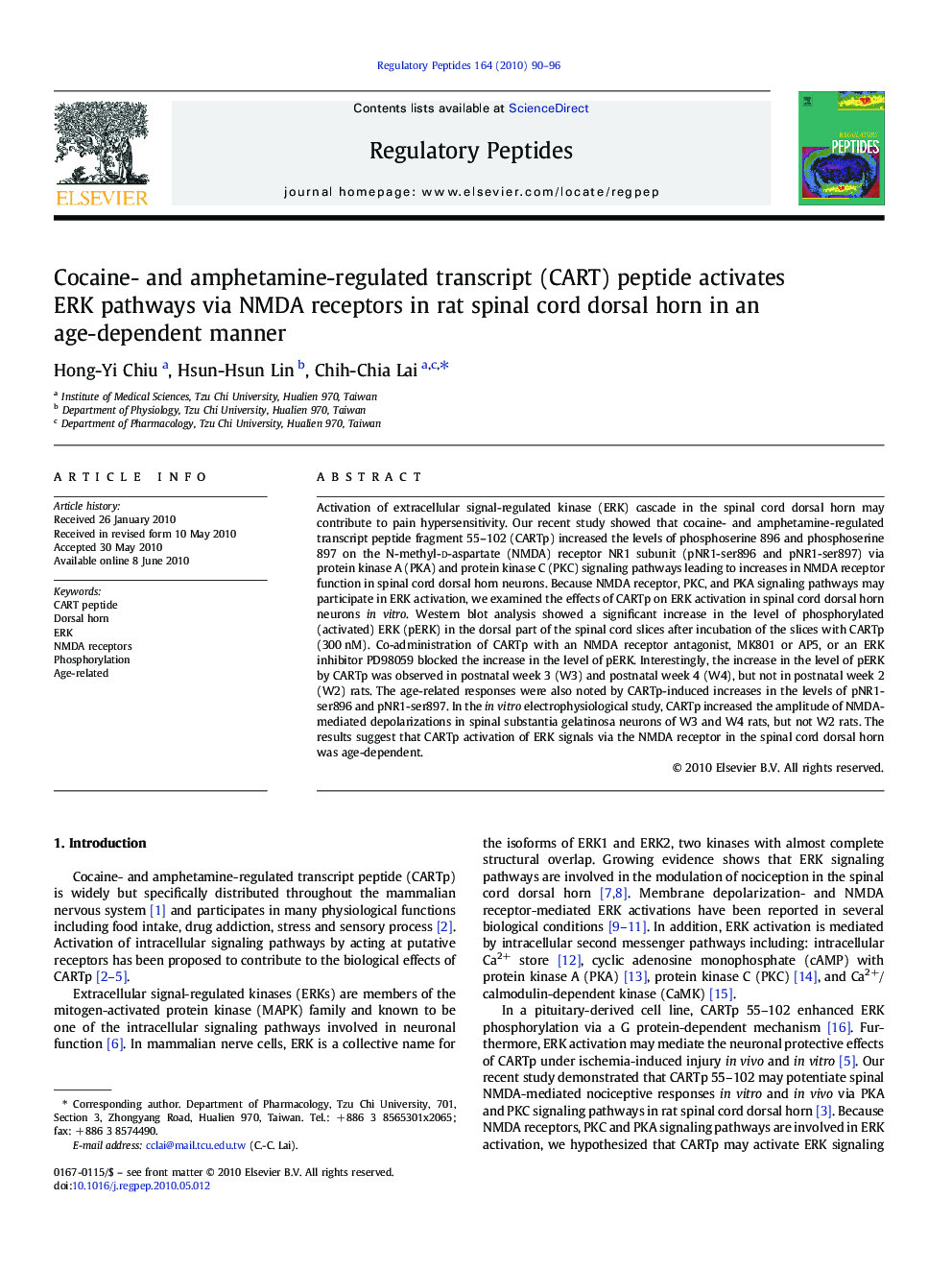| کد مقاله | کد نشریه | سال انتشار | مقاله انگلیسی | نسخه تمام متن |
|---|---|---|---|---|
| 2022817 | 1542421 | 2010 | 7 صفحه PDF | دانلود رایگان |

Activation of extracellular signal-regulated kinase (ERK) cascade in the spinal cord dorsal horn may contribute to pain hypersensitivity. Our recent study showed that cocaine- and amphetamine-regulated transcript peptide fragment 55–102 (CARTp) increased the levels of phosphoserine 896 and phosphoserine 897 on the N-methyl-d-aspartate (NMDA) receptor NR1 subunit (pNR1-ser896 and pNR1-ser897) via protein kinase A (PKA) and protein kinase C (PKC) signaling pathways leading to increases in NMDA receptor function in spinal cord dorsal horn neurons. Because NMDA receptor, PKC, and PKA signaling pathways may participate in ERK activation, we examined the effects of CARTp on ERK activation in spinal cord dorsal horn neurons in vitro. Western blot analysis showed a significant increase in the level of phosphorylated (activated) ERK (pERK) in the dorsal part of the spinal cord slices after incubation of the slices with CARTp (300 nM). Co-administration of CARTp with an NMDA receptor antagonist, MK801 or AP5, or an ERK inhibitor PD98059 blocked the increase in the level of pERK. Interestingly, the increase in the level of pERK by CARTp was observed in postnatal week 3 (W3) and postnatal week 4 (W4), but not in postnatal week 2 (W2) rats. The age-related responses were also noted by CARTp-induced increases in the levels of pNR1-ser896 and pNR1-ser897. In the in vitro electrophysiological study, CARTp increased the amplitude of NMDA-mediated depolarizations in spinal substantia gelatinosa neurons of W3 and W4 rats, but not W2 rats. The results suggest that CARTp activation of ERK signals via the NMDA receptor in the spinal cord dorsal horn was age-dependent.
Journal: Regulatory Peptides - Volume 164, Issues 2–3, 24 September 2010, Pages 90–96